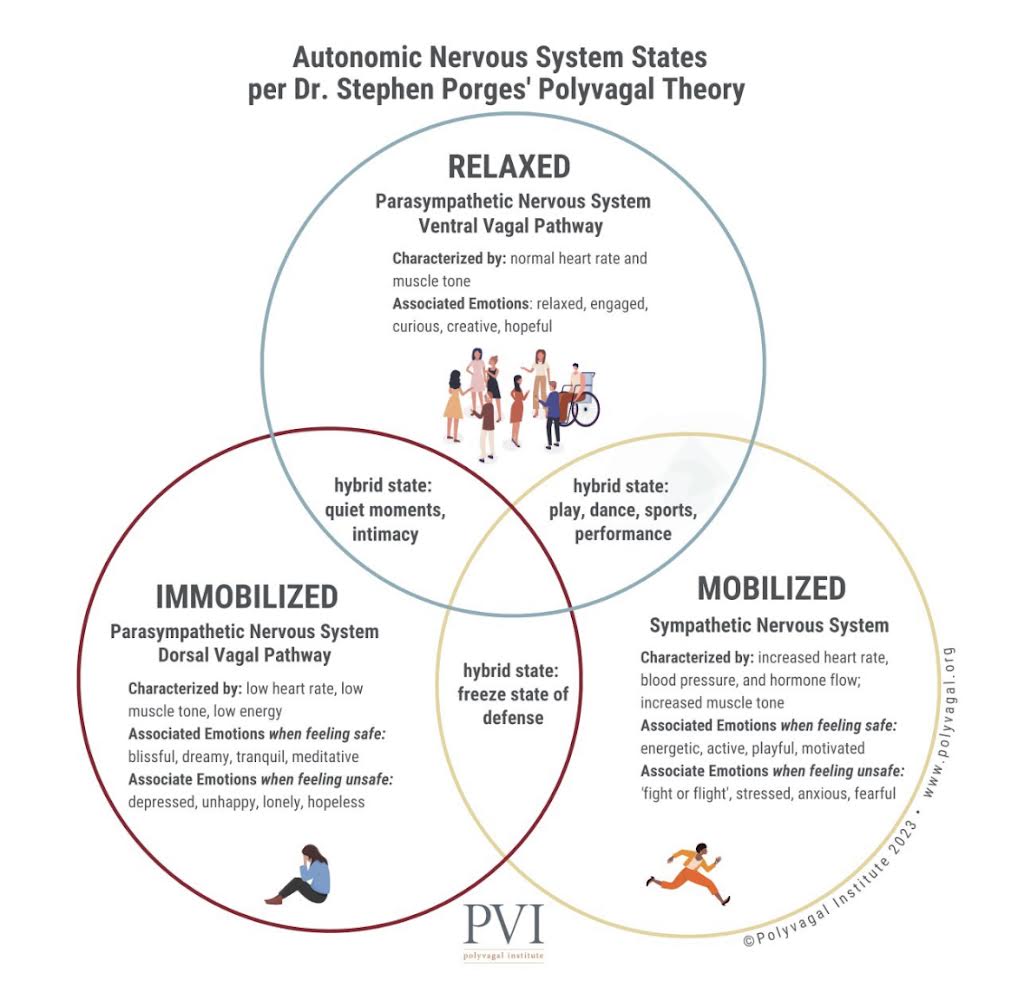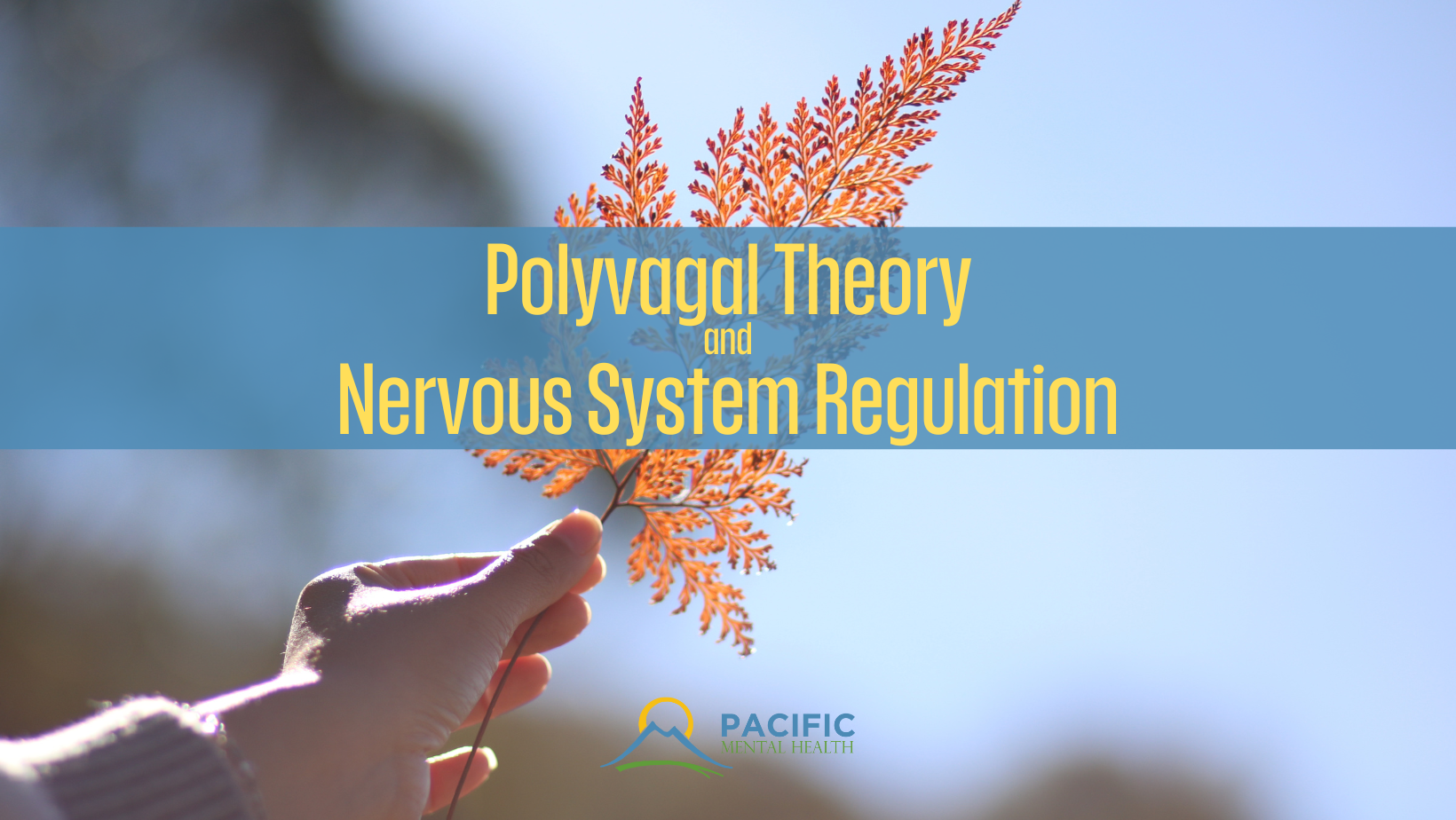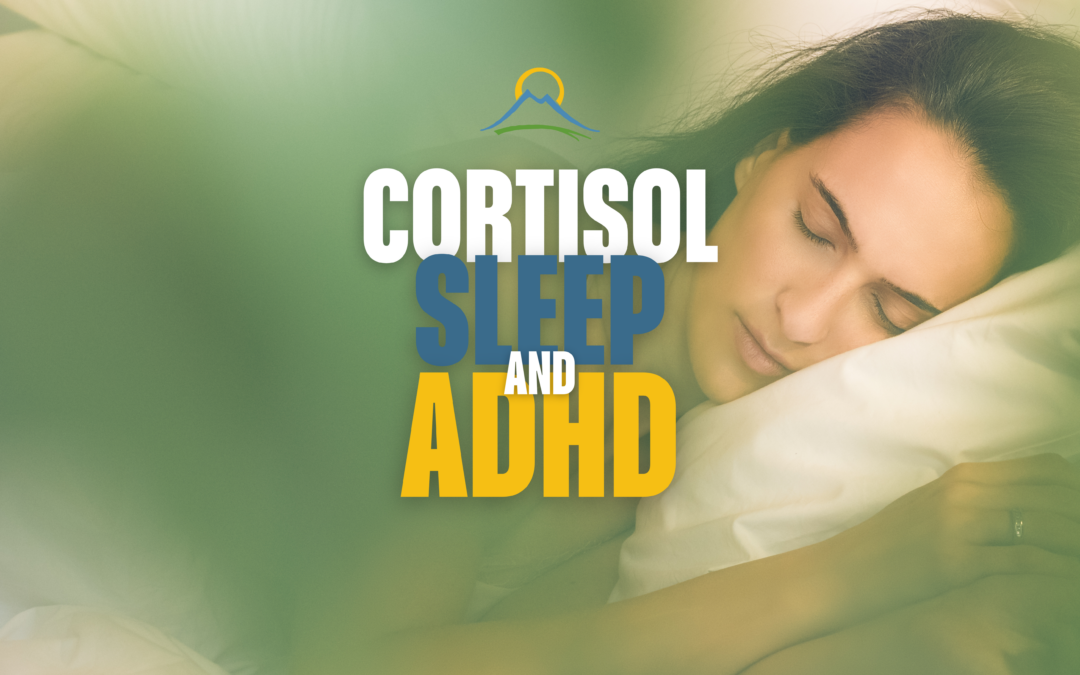Our autonomic nervous system is the heart of our daily experiences, as well as controlling our vital body functions. It has the power to influence how we live, love, and work; it can guide the way we move through the world. Understanding the nervous system through the view of the vagus nerve can help us better understand our fight or flight response (sympathetic nervous system), shut down response (dorsal nervous system), and ventral regulation (top of nervous system hierarchy, a system of connection). (Deb Dana)

The ventral state of the nervous system, at the top of the hierarchy, is the state we are in when we are regulated, engaged, grounded, and organized. Life seems and feels more manageable. We have hope. We can build connections to others, ourselves, and the world around us.
One step under is the Sympathetic nervous system, which is our everyday vital functions control, such as heart rate breathing, brings us energy and, when in fight or flight, has the power to bring powerful emotions such as anxiety or anger.
At the bottom of the nervous system hierarchy is the dorsal nervous system, which is in charge of digestion regulation. However, when it is activated in survival mode, we go to shut down mode, often disconnecting and disappearing. (Wagner, 2022). When moments feel too much for us, we move down through the hierarchy into fight or flight, and if that does not work, we move into shut down mode; as we navigate the day, we can move up and down throughout the hierarchy.
Polyvagal Theory

Polyvagal theory helps us understand that the Vagus nerve can calm the body through different mechanisms. The ventral nervous system reduces the body’s regularly active state. Think of it as gently pulling the reins of a horse to slow down as you ride it into the stable. While the dorsal nervous system shuts down (freeze or fawn), it can dissociate us and move us into immobility while also having the power to affect the heart, lungs, and digestive system. (Wagner, 2022).
Ventral vagal responses happen in milliseconds, while sympathetic activation takes seconds and involves more involved chemical reactions (like losing the horse’s reins). Once the fight or flight chemical reactions begin, it can take 10-20 minutes to return to a previous state. Ventral vagal releases do not involve these chemical reactions so we can adjust faster. (Wagner, 2022).
Regulation Practices to try
- Glimmers: Returning to ventral states can be as simple as setting an intention to notice glimmers throughout our days. Glimmers are small moments that bring us a smile. This could be a friendly face, a good song, or nature. We are so often looking for the negative; by slowly shifting that mindset to look for the glimmers or small positive moments of calm or joy or relief, we begin to seek out more. Try to keep a list of glimmers and continually add to it as you seek and find more glimmers in your days. (Deb Dana, 2022).
- Reach for Regulation: When we move into our sympathetic nervous system, fight or flight, we can feel unorganized, chaotic, or the energy is off. To move back to ventral regulation, imagine you can reach for regulation. Stretch and move your arms in different ways to try and reach out and grab that regulation, experiment with movement, notice your body, and check in with what is happening and what story you are telling yourself with your reach. (Dana, 2022).
What If?
When we move into our dorsal nervous system, its our shut down, disconnect, and rescues from overwhelm. Start by identifying your worries: “If I were not (….feeling, thinking, doing, etc.), then I would be (….what negative experience might happen)” and then challenge yourself to flip it to “If I were not (…same feeling, etc.), then I would be (…. positive experience might happen). (Dana, 2022).
References
- Dana, D. (2022). Polyvagal Theory Card Deck. W.W. Norton & Company.
- Porges, S. (n.d.). Autonomic Nervous System States . What is Polyvagal Theory. Polyvagal Institue. Retrieved October 27, 2023, from https://www.polyvagalinstitute.org/whatispolyvagaltheory
- Wagner, D. (2022, August 9). Polyvagal theory in practice. Counseling Today. https://ct.counseling.org/2016/06/polyvagal-theory-practice/









0 Comments